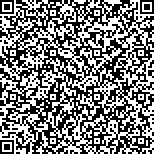下载中心
优秀审稿专家
优秀论文
相关链接
摘要

传统的高光谱分类方法通常基于单一像元的光谱或纹理特征,很少考虑地物空间结构信息与空间相关特征.本文将面向对象规则与基于像元的分类进行融合,利用对象的空间结构特征和光谱特征进行混合分类,旨在克服像元层次分类的不足.本文尝试性的提出了两种混合分类方法:(1)基于分形网络演化的多尺度分割支持向量机分类(2)基于多层分水岭分割的SVM分类,并将这两种方法应用到天宫一号高光谱数据上.结果表明:基于面向对象规则的混合分类方法有效地提高了分类精度,不仅能够改善同谱异物现象,而且解决分类结果中地物破碎的问题.
Traditional hyperspectral classification methods based on per-pixel spectral or texture features fail to take account of spatial structure and spatial correlation characteristics. In order to overcome this problem, a mixed classification method is proposed which incorporates spatial information by fusing object-based segmentation with pixel-wise classifier. This paper tentatively examines two mixed classificationstrategies: (1) Combine multi-resolution segmentation algorithm which based on Fractal Net Evolution Approachwith the use of Support Vector Machine (MSVM); (2) Combine multi-scalewatershed segmentation with Support Vector Machine (WSVM). The two methods were applied to Tiangong-1 hyperspectral data and the results showed that the proposed methods improved the classification accuracy effectively which not only avoid the spectral confusion to some extent but also mitigate the land fragmentation problem.

